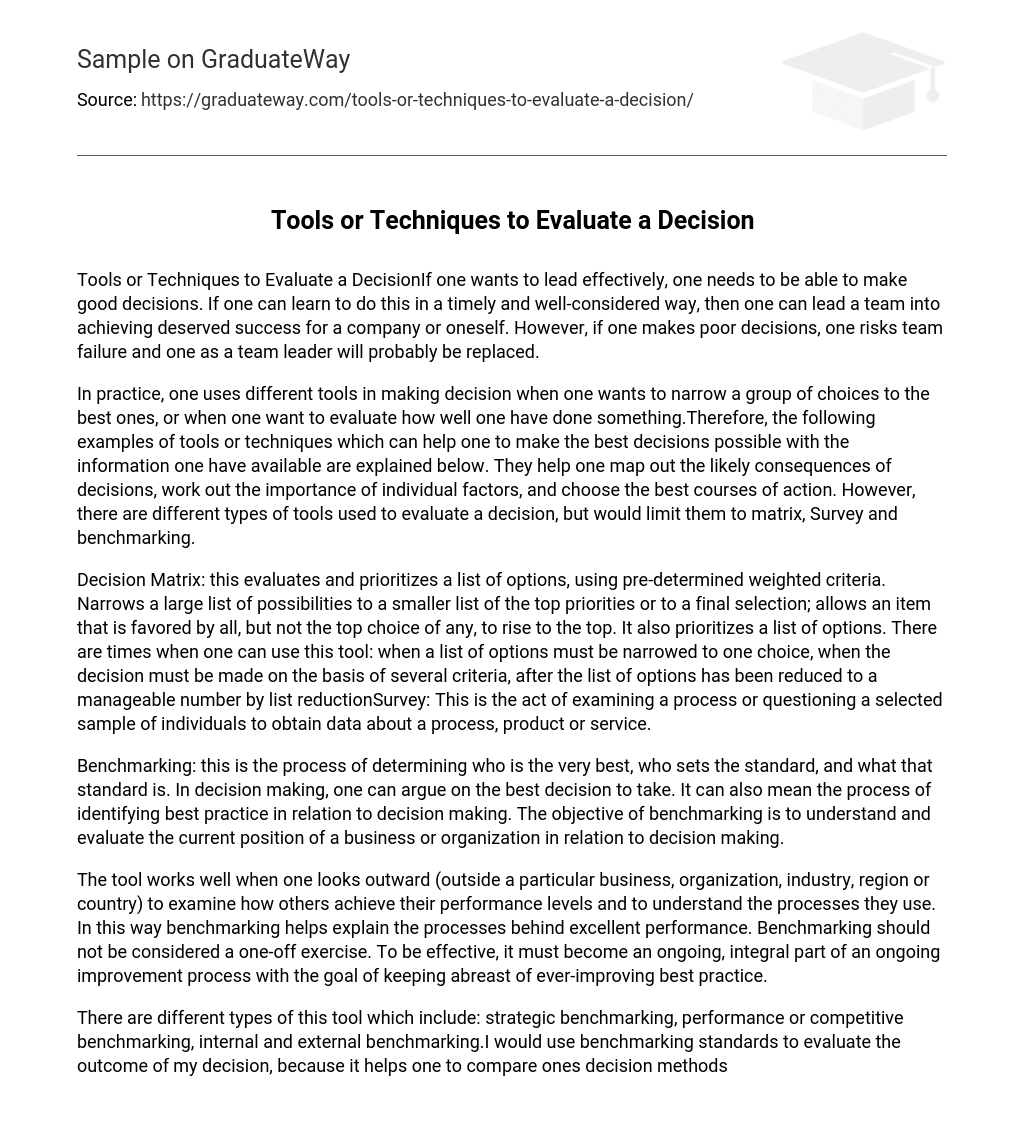If one wants to lead effectively, one needs to be able to make good decisions. If one can learn to do this in a timely and well-considered way, then one can lead a team into achieving deserved success for a company or oneself. However, if one makes poor decisions, one risks team failure and one as a team leader will probably be replaced.
In practice, one uses different tools in making decision when one wants to narrow a group of choices to the best ones, or when one want to evaluate how well one have done something.Therefore, the following examples of tools or techniques which can help one to make the best decisions possible with the information one have available are explained below. They help one map out the likely consequences of decisions, work out the importance of individual factors, and choose the best courses of action. However, there are different types of tools used to evaluate a decision, but would limit them to matrix, Survey and benchmarking.
Decision Matrix: this evaluates and prioritizes a list of options, using pre-determined weighted criteria. Narrows a large list of possibilities to a smaller list of the top priorities or to a final selection; allows an item that is favored by all, but not the top choice of any, to rise to the top. It also prioritizes a list of options. There are times when one can use this tool: when a list of options must be narrowed to one choice, when the decision must be made on the basis of several criteria, after the list of options has been reduced to a manageable number by list reductionSurvey: This is the act of examining a process or questioning a selected sample of individuals to obtain data about a process, product or service.
Benchmarking: this is the process of determining who is the very best, who sets the standard, and what that standard is. In decision making, one can argue on the best decision to take. It can also mean the process of identifying best practice in relation to decision making. The objective of benchmarking is to understand and evaluate the current position of a business or organization in relation to decision making.
The tool works well when one looks outward (outside a particular business, organization, industry, region or country) to examine how others achieve their performance levels and to understand the processes they use. In this way benchmarking helps explain the processes behind excellent performance. Benchmarking should not be considered a one-off exercise. To be effective, it must become an ongoing, integral part of an ongoing improvement process with the goal of keeping abreast of ever-improving best practice.
There are different types of this tool which include: strategic benchmarking, performance or competitive benchmarking, internal and external benchmarking.I would use benchmarking standards to evaluate the outcome of my decision, because it helps one to compare ones decision methods with others that is comparability. It is easy to use and to apply.
References
- www.tutor2u.net
- www.asq.orgwww.management.about.com





